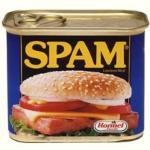Living in Seattle, food phobias are everywhere. If you're afraid of conventionally grown fruits and vegetables, GMOs, hormones in meat, pesticides, gluten, or anything that requires a PhD scientist to produce, then Seattle is your organic Mecca.
food
Given modern medical advances extending survival rates for chronic diseases like cancer along with the population aging at an exponential rate, companies are seeing opportunities for niche markets.
Vani Hari, the infamous "Food Babe" who says that we shouldn't eat anything that we can't pronounce, has a new emulator: Panera Bread.
Imagine going to the doctor's office. Noticeably absent are any modern tools -- laptops, DNA tests, X-ray scanners. He likes to do things the old-fashioned way. Medicine was better 100 years ago.
The U.S. Dietary Guidelines were born of good intentions. They were created to make Americans healthier.
Food choice should be left as a choice for consumers, but that is not how Michael Pollan, contributing writer at The New York Times, sees it.
As a greater number of people enter the middle class around the globe, many will turn away from plant-based diets in favor of meat-based diets.
When it comes to matters involving food -- shopping for, eating and disposing of it, just to name a few -- it's surprising how lack of awareness factors into each area.
It is nearly impossible to get every last drop of liquid foods out of their containers. Ketchup and syrup are among the worst offenders. In fact, up to 15% of liquid foods can be wasted due to such inefficient packaging.











